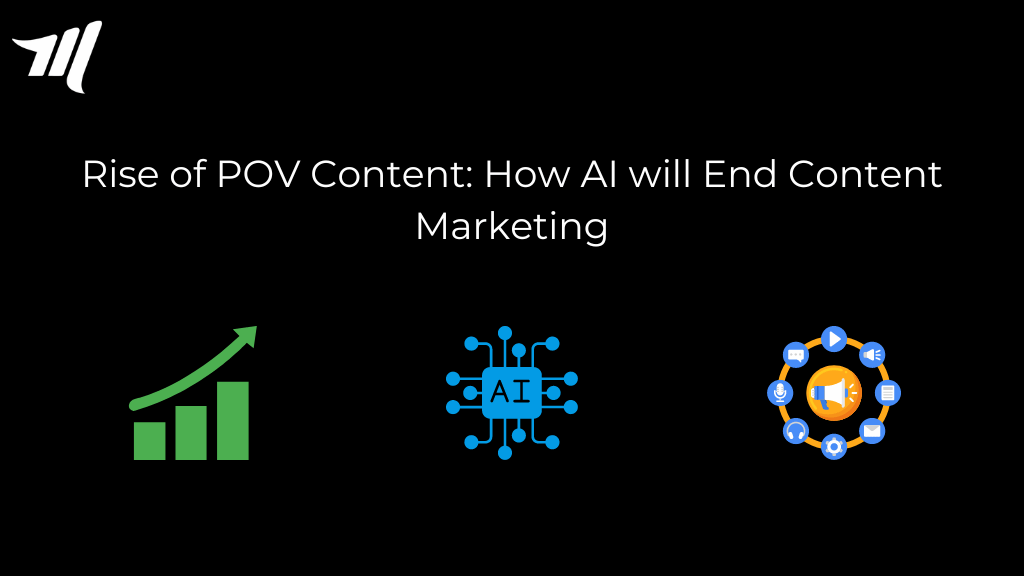When OpenAI’s ChatGPT initially made waves, it upended a variety of industries and provided content marketers with new tools for their work. However, this newfound freedom came with a catch: anyone with internet access could now easily create content thanks to open-source generative AI models.
Drafting an article, newsletter, or social post in seconds sounds like a content marketer’s dream, doesn’t it?
We quickly realized otherwise. AI models saturated the market with generic copies. Companies (and their customers) recognized that as the barriers to providing content decreased, so did the standards. What was the result? There is a lot of content that contains faulty data, natural bias, incorrect information, and the all-too-common AI hallucinations.
Brands seeking to break through a sea of AI-generated content must adapt accordingly. SEO-driven blog entries and generic how-to articles will not suffice when today’s AI algorithms can generate them in seconds. So, how can you future-proof your brand content? Concentrate on something AI cannot replicate: your unique point of view (POV).
POV Content is Future-proof Content
With AI threatening to homogenize content marketing and messaging, organizations must focus on increasing their presence and reputation through point-of-view content. Consider it a proprietary value-add for your company. The emphasis should be on developing and sharing journalism-driven stories that incorporate original research and personalized opinions, which are part of your brand DNA.
That involves developing omnichannel content newsletters, periodicals, podcasts, social media platforms, and events that promote your brand voice and perspective. You should also stake your claim on the platforms and communities where your target audience is most active and where you can consistently promote your point of view.
Here are some tips for developing a strong point of view:
1. Know Your Why
Focus on why you’re creating content rather than the latest tools and technology. Define your brand’s mission and values. What makes you unique? What principles guide your work? What areas can you cover more comprehensively and in-depth than your competitors? Defining these categories allows you to develop content in areas where you have the most potential to be an authority and thought leader in your field.
2. Focus on Storytelling
Talk to your consumers and stakeholders about their genuine needs and how you should address them. Conduct some opposition research to see where you are in the competitive landscape. Then work on creating viewpoints that your audience can only acquire from you.
Prioritise subject-matter expert interviews, original research, case studies, and insider knowledge. And, before developing every new piece of content, consider whether your target audience can find it elsewhere. Can it be easily copied? (If you answered yes, consider again.)
3. Raise your Brand’s Standards
Create and follow editorial guidelines based on your brand’s pillars and quality standards. Engage talented reporters, writers, editors, fact-checkers, and researchers to create content that reflects your viewpoint while still adhering to journalistic norms, particularly accuracy.
4. Balance AI and Human Strengths
The advantages of adopting AI for ideation and content amplification are undeniable. Go ahead and experiment. Then you may focus human talent on content strategy and creation. If you get it right, you’re elevating your experts and strategists by freeing them from repetitive tasks and allowing them to focus on higher-order thinking and planning.
AI may undoubtedly save content teams time in areas such as research, brainstorming, and idea generation as long as human control is maintained. This is how you ensure that automation does not dilute your brand’s point of view.
Authentic = Human-centric
We hear a lot about how today’s viewers expect authentic content from brands. But what does that mean? Being authentic means showing our audiences that there are real people behind the brand: fellow humans with feelings, thoughts, and views and, most importantly for content teams, knowledge.
That is not something AI can do. This is not to suggest that AI is the bad guy (or bot). Most of us agree that AI and automation tools are positively transforming content marketing. They can use machine learning to improve several aspects of content planning and creation, such as campaign ideation, content summarization, text classification, and content gap identification.
Some believe that artificial intelligence will completely replace human creators. They are dead wrong. Generative AI models can automate tasks and regenerate knowledge in novel ways, but they cannot reason. They have no experience. And no matter how well-written the copy is, they lack a genuine point of view.





